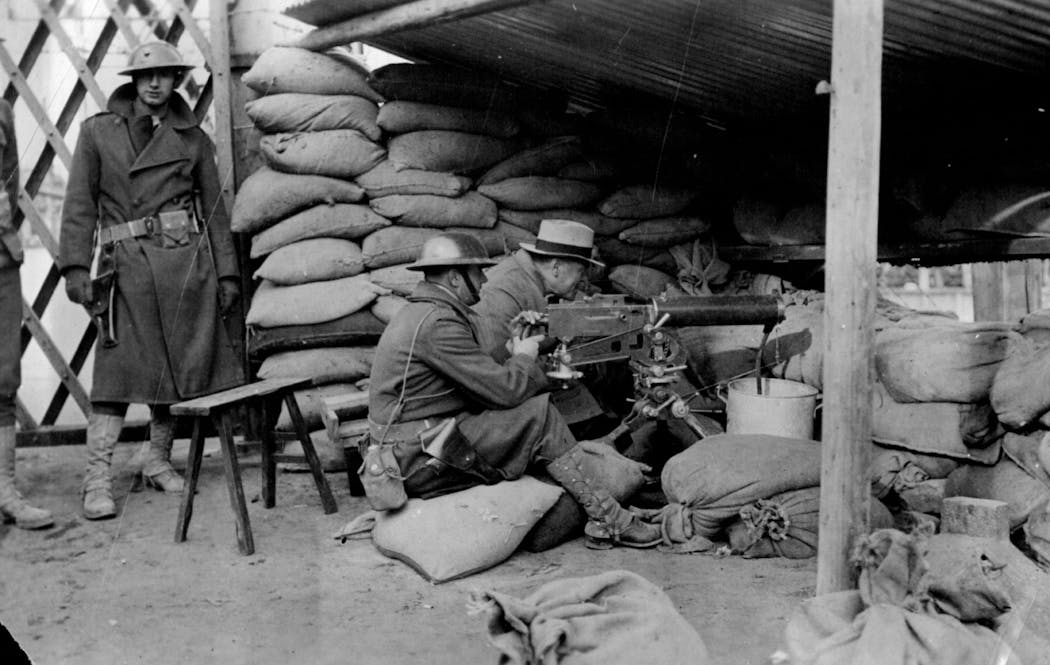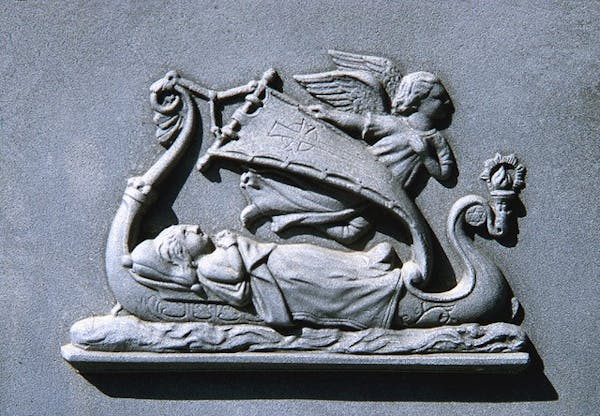Floyd Gibbons blossomed into one of America's most colorful newspaper reporters in the early 1900s — but only after getting off to a rocky start in Minneapolis.
Graduating from Minneapolis Central High School in 1904, Gibbons headed to Georgetown University in Washington, D.C., where he flunked English and got expelled for playing craps and flooding a dorm floor during a prank.
He returned home in 1906 and landed a job at the Minneapolis Daily News, where he was fired for showing up late to work. At the Minneapolis Tribune, he was stripped of his police beat after sleeping through a major downtown fire. He was at the Tribune when he was arrested in Wisconsin for cutting a telephone wire in order to beat competing reporters covering a hostage standoff.
From that ignominious start, Gibbons' fame swelled after he left Minneapolis in 1912 — becoming a renowned globetrotting foreign correspondent for the Chicago Tribune. He interviewed Mexican revolutionary Pancho Villa, and received the Croix de Guerre for bravery during World War I from the French government. Five years after his death, during World War II, a U.S. merchant ship was named in his honor.
Gibbons jumped into a lifeboat after German torpedoes sank his British passenger ship in 1917, and filed a dramatic 4,000-word dispatch that helped push the United States into World War I. He lost his left eye to a ricocheting German bullet a year later while pulling a Marine to safety at the battle of Belleau Wood in France.
Wearing a white eye patch the rest of his days, the swashbuckling Gibbons became "immediately recognizable as he barnstormed across a fractious postwar world," according to the Washington Post, covering conflicts in Ireland, Russia, China, Spain and Ethiopia. Nicknamed the "Headline Hunter," he went on to deliver rapid staccato-style bulletins on the NBC and CBS radio networks.
When a sudden heart attack killed the four-pack-a-day cigarette smoker in 1939 at the age 52, the Minneapolis Times-Tribune said it was Gibbons "more than anyone else who typified in the public mind the romantic aspects of war reporter."
All that despite his bumpy start in Minneapolis, where reporters were expected to arrive at work at 7:30 a.m. "Floyd would be damned" if he got to the office before 9:30, Tribune columnist William J. McNally recalled in 1942.
McNally described Gibbons as "a brash and bumptious kid, unmistakably talented, but happy-go-lucky and not amenable to discipline," and said he "developed this incomparable technique of police-reporting … which was to make him world-famous, right here in Minneapolis."
Born in Washington, D.C., in 1887, Gibbons was the oldest of five siblings; his father owned a store and published a small community newspaper. The family moved to Iowa in the late 1800s and then north to Minneapolis, where the 1905 census shows them living near Loring Park. They later moved to the city's Lowry Hill area, according to the 1910 census.
In October of that year Gibbons earned his first big scoop, according to a 1953 biography written by his brother — only to get arrested for the way he worked the story.
At 23, he was among a pack of reporters who descended on tiny Winter, Wis., where an eccentric named John Dietz and his family were locked in a standoff with authorities for days before finally surrendering amid "withering gunfire," the Times-Tribune reported.
On Oct. 8, 1910, the Headline Hunter made headlines of his own: "The Tribune Representative Arrested at Winter," the newspaper acknowledged on Page 12, complete with a photo of Gibbons on horseback.
According to his brother's book, Gibbons was in a car driven by his competitor from the Minneapolis Journal, Red Schwartz, who was having a local lumberjack hold the only nearby phone for him to use. Gibbons jumped out of the car, climbed a telephone pole and used a hatchet to cut the phone line. Then he got back in the car and sped to the nearest telegraph office to scoop the other reporters.
Tribune editors covered Gibbons' bail and arranged for a lawyer and, according to Andrew J. Nelson, even gave him a bonus. Nelson, whose 2011 thesis on Gibbons is available online at www.tinyurl.com/FloydGibbonsThesis, based his account of the Wisconsin standoff on the 1953 book; other newspapers reported at the time that Gibbons had cut the line too late to prevent the story's transmission. It was an episode Gibbons liked to laugh about years later.
Nelson, a longtime Nebraska reporter, wrote that "Gibbons was remarkably aggressive, and could be counted upon to get the story," adding that some of his tactics today would be considered unethical.
And while he was a celebrity in his day, Nelson wrote, today Gibbons "is an under-examined figure in American journalism history, yet one whose career yields lessons for current and future journalists and newsgatherers."
Curt Brown's tales about Minnesota's history appear every other Sunday. Readers can send him ideas and suggestions at mnhistory@startribune.com. His latest book looks at 1918 Minnesota, when flu, war and fires converged: strib.mn/MN1918.

Civil War group honors the last Union veteran buried in each Minnesota county

St. Cloud professor's book paints nuanced look at enslaved woman freed in Minneapolis

Paying overdue tribute to his grandmother, a Minnesota farmer recarves family history

Civil War officer brought formerly enslaved family to Minnesota




